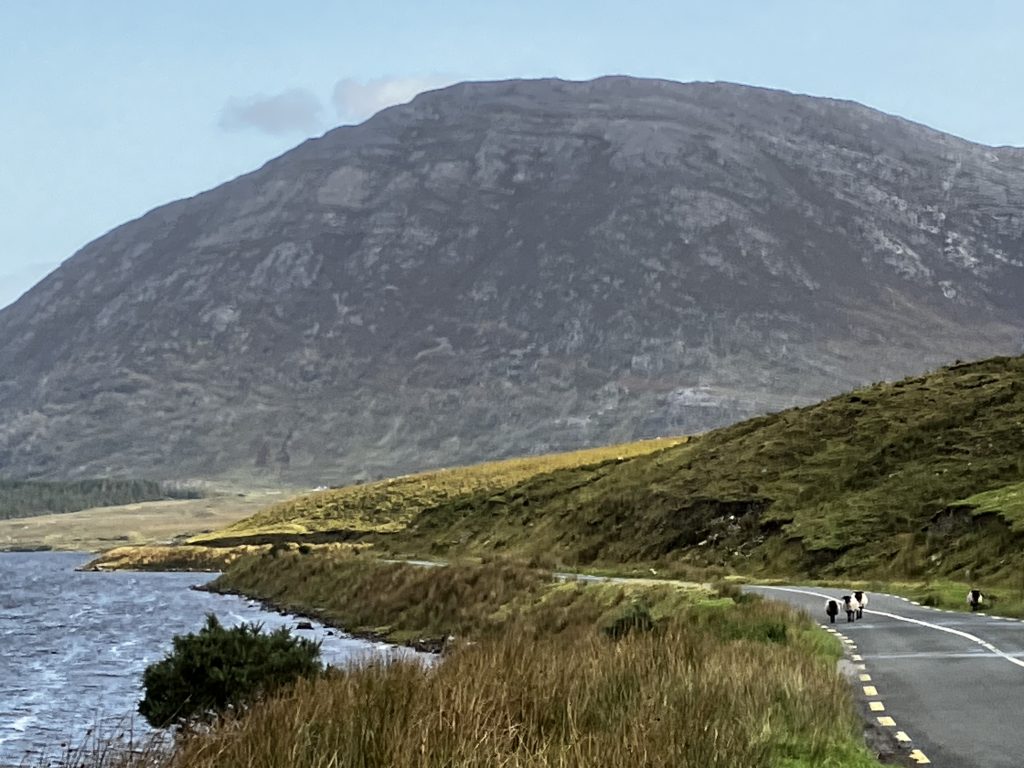
Connemara was beautiful and wild.
It’s harder country here than where we’ve been so far. Ben was telling us about the Connemara ponies, small white hoses, legend has it, were brought over by the Spanish Armada. They are highly prized for their jumping and racing abilities. Their foals are born brown and then turn white as they mature.
Along the way, we passed by two big hotels. “ Normally we’d stop at one or t’other for a toilet break,” said Ben, “ but we can’t now. They’re full of Ukrainians fleeing from the war.”
It brings it home a bit, how close everything is here to one another.
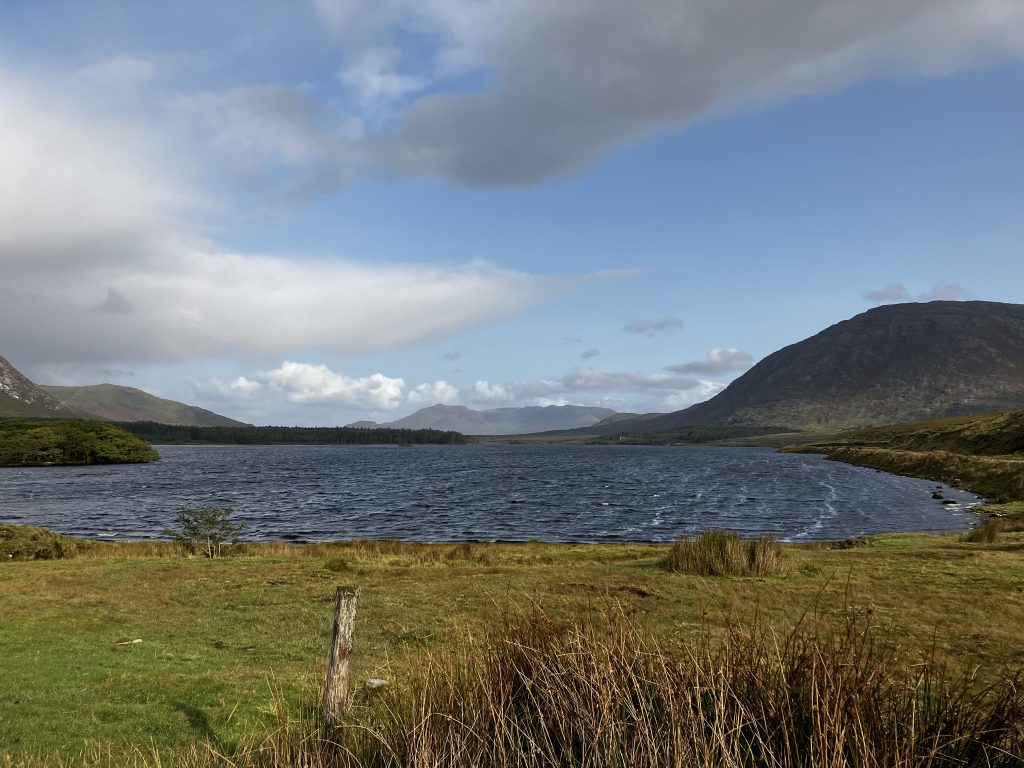
Lough Inagh
As the sun came out, it lit up the colours on the shore on the other side. The heather was glowing a reddish/brown colour, the grass was – of course- green and the bleating of the sheep wanting to be fed by the tourists and the sound of the wind was the only things I could hear.
( I blocked the tourist chatter out.)
There were a couple of houses on the road with big picture windows looking out over the lake. What a view to see every day!
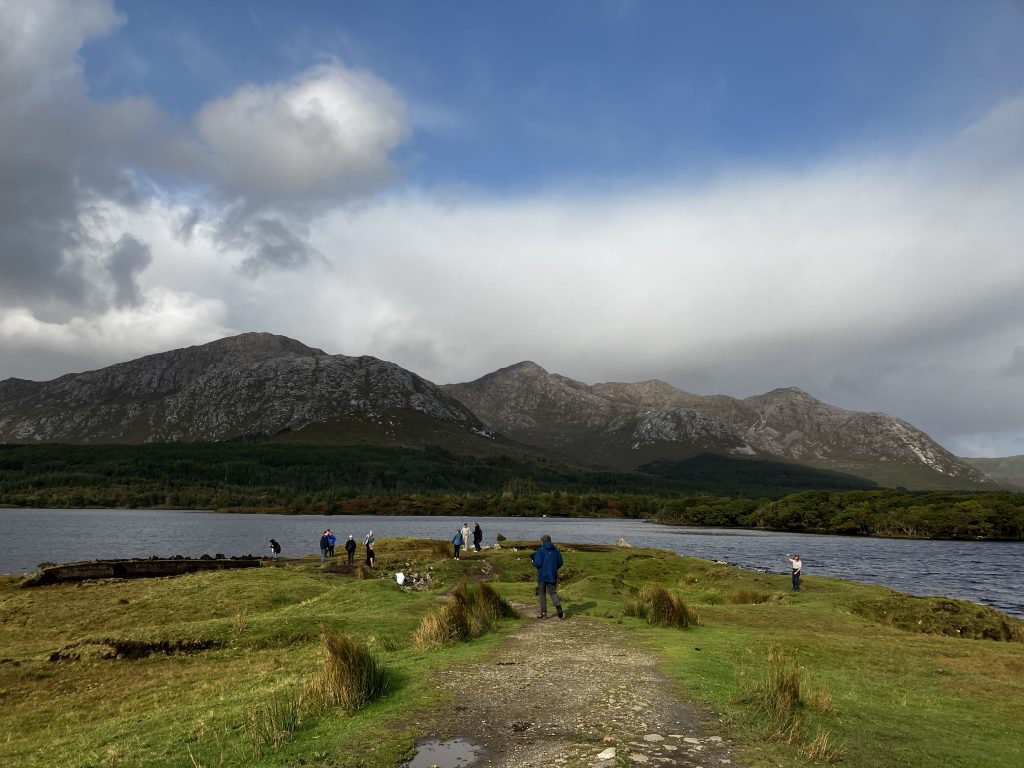
Ben said that the EU are paying farmers to run sheep on the Connemara hills. They have to state how many head of sheep they have and are paid accordingly.
The EU keep a watch on them by using satellite technology. “ But the farmers, if they’ve over-estimated their sheep, they do things like paint the rocks white, or borrow some sheep from a neighbour.”
After our lit stop by the lake, we were off to Kylemore Abbey. This place has an interesting history.
A rich politician called Mitchell Henry, who was a really good landlord and fought for the rights of his tenants, fell in love with this place and decided to build a grand estate for his wife Margaret.
He certainly did.
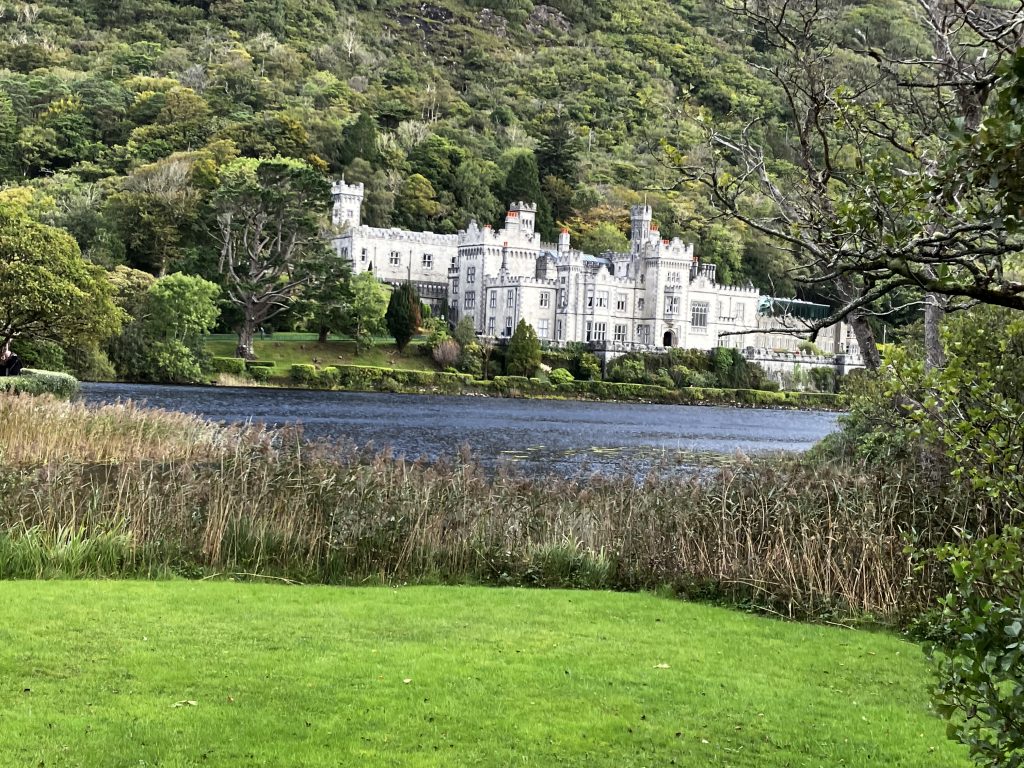
The house looks like a fairytale castle as we crossed the bridge towards it. I don’t think I’m overstating it when I say that we all gasped when we saw it. It’s worth enlarging it to have a good look at it. Stunning.
He built the grand house – which, disappointingly, was a little boring when I went into it – but the gardens would have been superb. They were still amazing, even though the passing of time has not been kind to the scope they used to have.
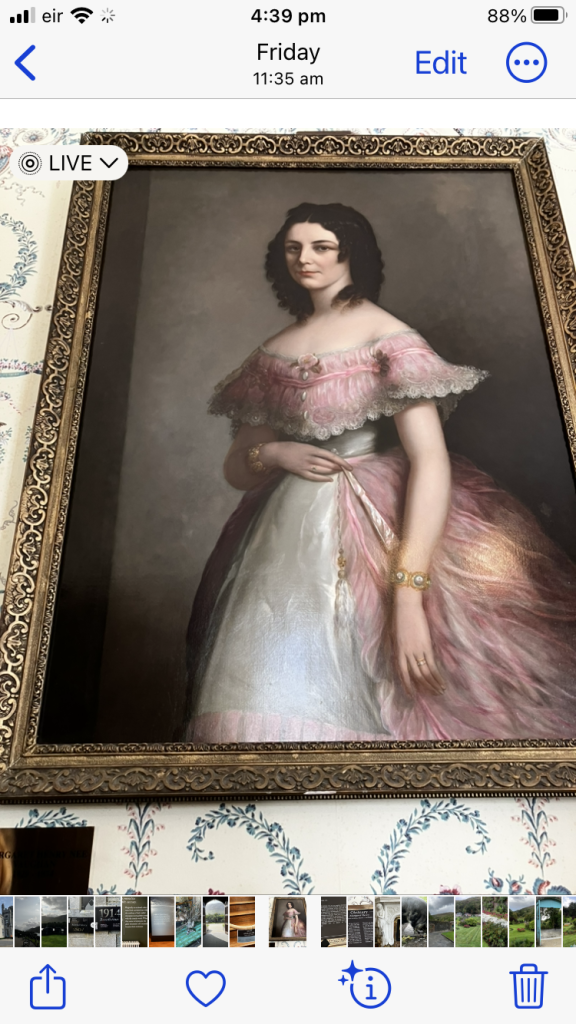
Sorry about the weird photo. I’m learning how to transfer photo’s from my phone to my iPad because they haven’t all synched. Once I put them here I can’t delete them, so here is one I had second thoughts about but can’t get rid of. You’re welcome.
This is a portrait of his wife.
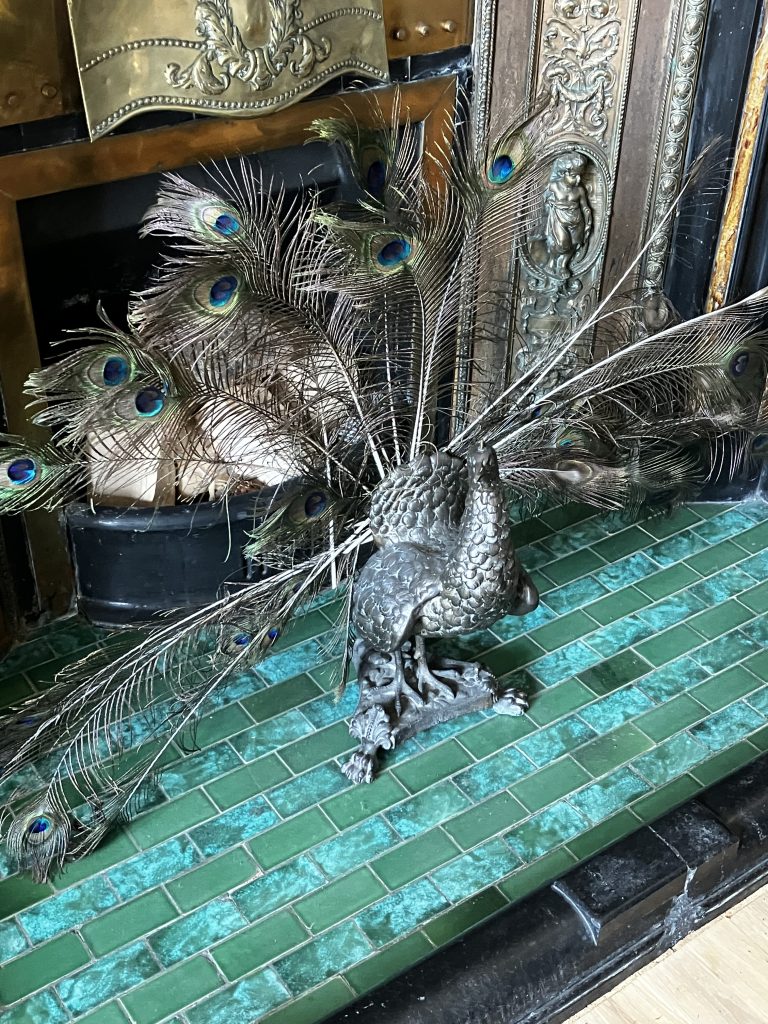
They lived there happily until, on a family holiday in Egypt, his wife died of dysentery. She was only 45.
My grandmother, who was a superstitious woman, would have said that the family was asking for misfortune, by having peacock feathers inside the house.
He ended up losing his fortune and, after changing hands a few times, the property came to the attention of a group of Irish Benedictine nuns who used to have an abbey in Ypres. They were evacuated to England by some Irish fusiliers when their abbey was bombed into oblivion, and in 1920 they came to what is now called the Abbey.
The Benedictines are an enclosed order. It was suggested to them by the Irish Archbishop in 1921 that the mountains be their walls. I like that. They still live here today, though their numbers are fewer.
They make heather honey, which has same healing properties as Manuka honey; handmade chocolates and they bake for the cafe. I had the best blueberry muffin I’ve ever eaten in my life here!
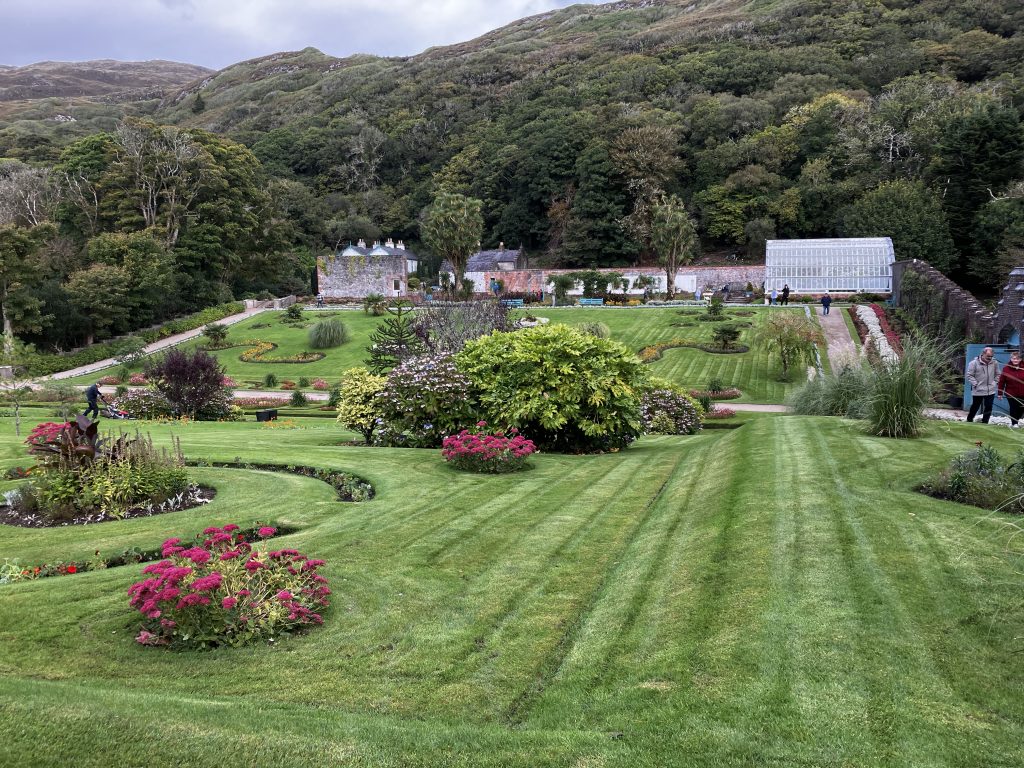
After looking at the house, I took the shuttle bus up the hill to the gardens. There, I saw a pig and them made my way towards an unassuming doorway towards the walled gardens.
This was what greeted me when I went through the gate.
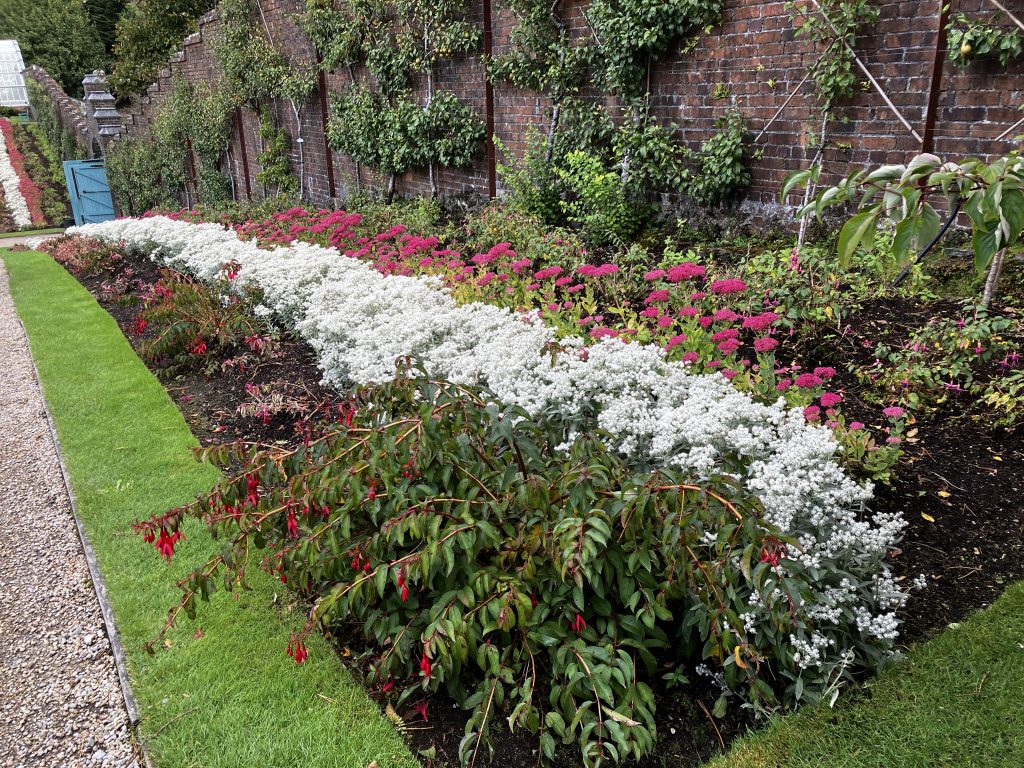
Herbaceous border, anyone?
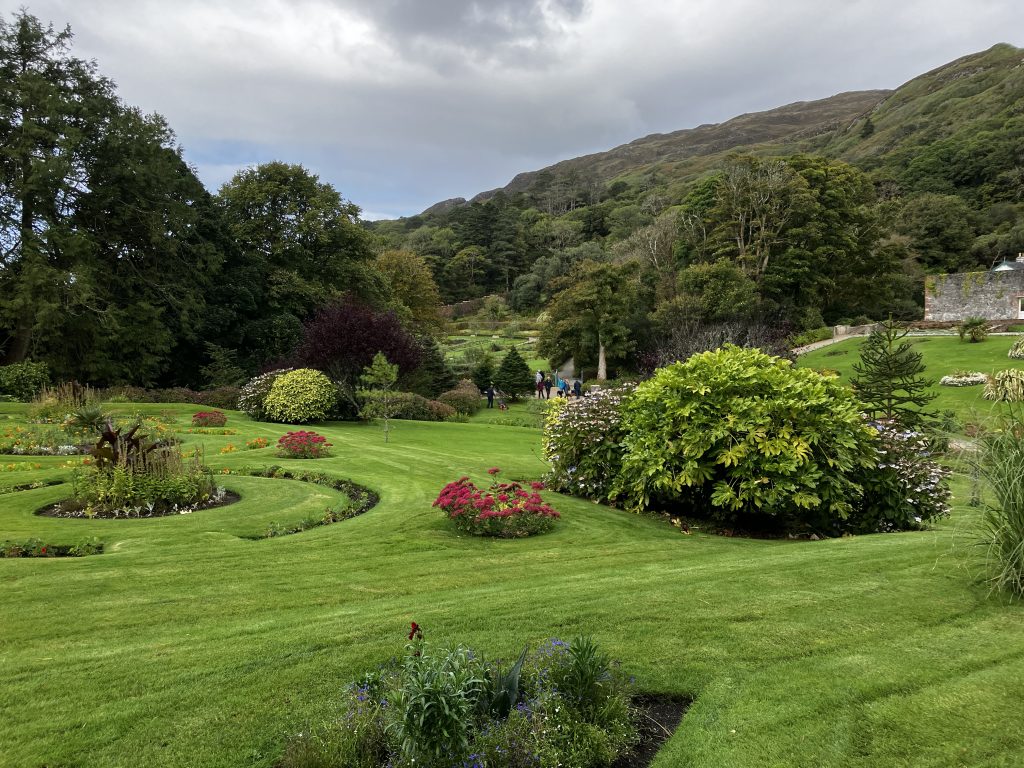
The gardens seemed to go on forever.
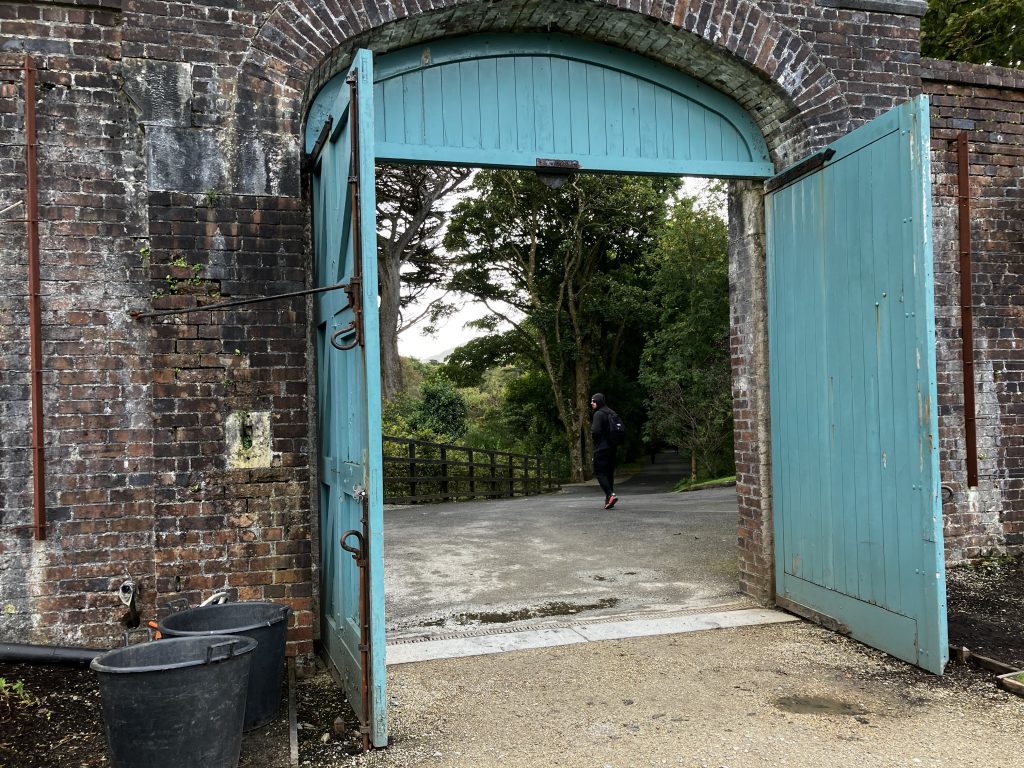
They have pops of turquoise which looks really good. I’m filing this away for use in my own garden…
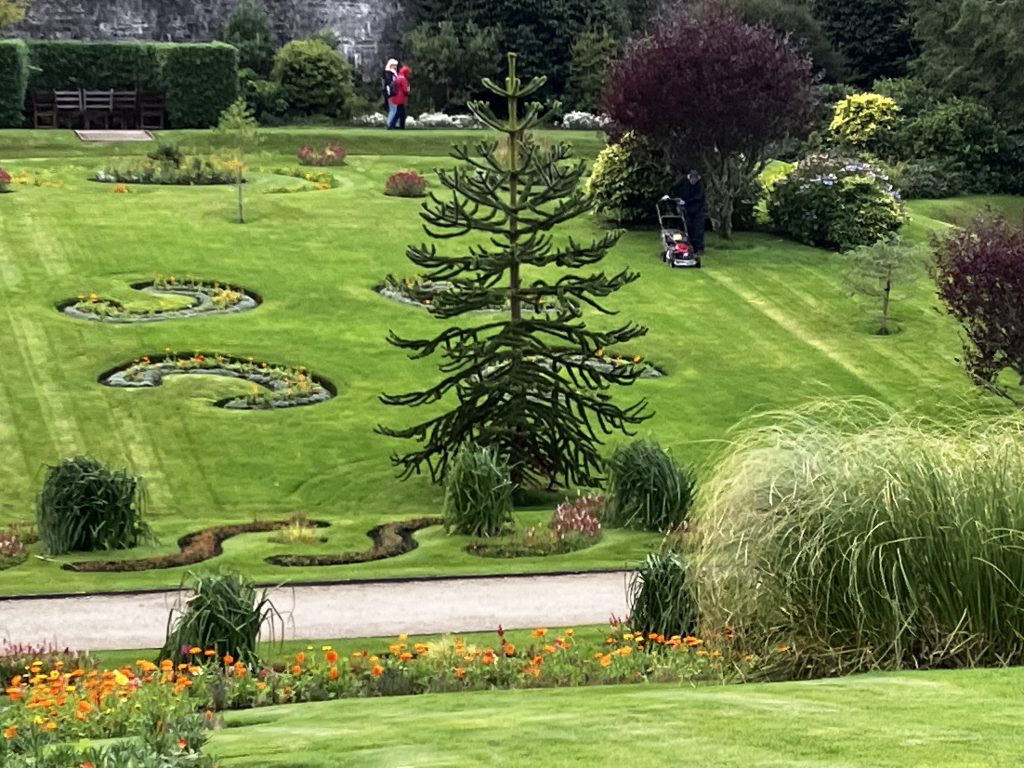
A Monkey Puzzle tree. Originally from South America, for some reason they became a real “must have” in fashionable Victorian gardens.
I’m not really a fan, myself, but I grew up reading about Monkey Puzzle trees and at least now I know what they look like.
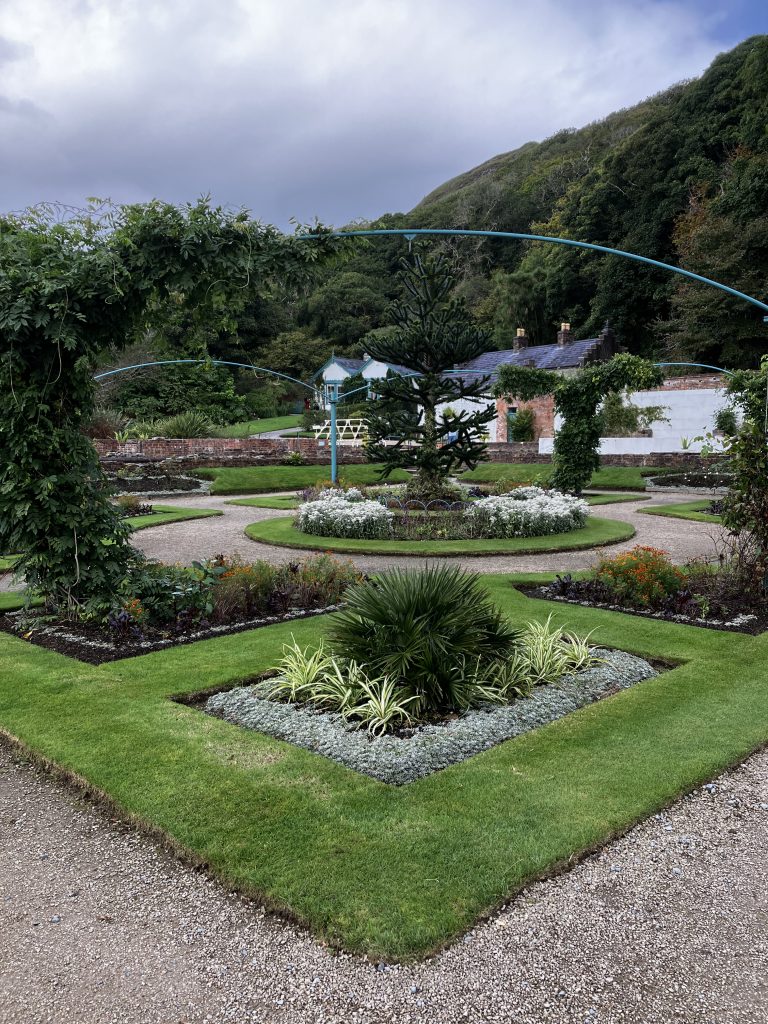
The roof in the back is the groundskeeper’s house. Not a bad job to have.
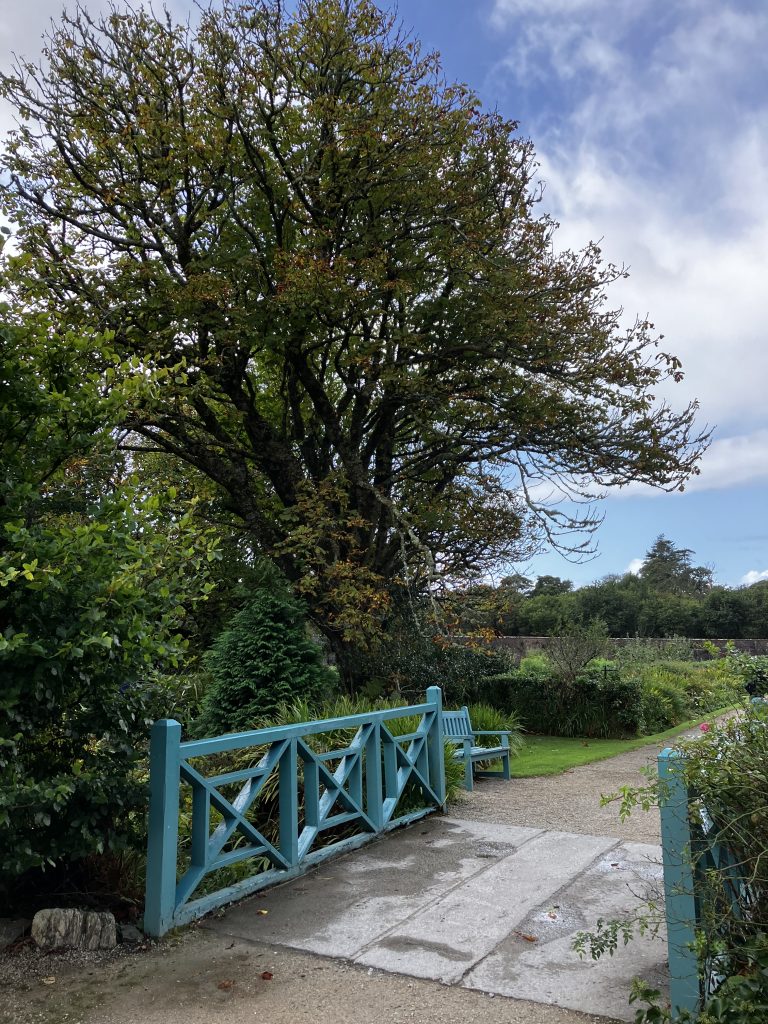
Naturally, I spent a lot of time wandering through the vegetable gardens, feeling a bit guilty that mine isn’t anywhere as beautifully tended as this one.
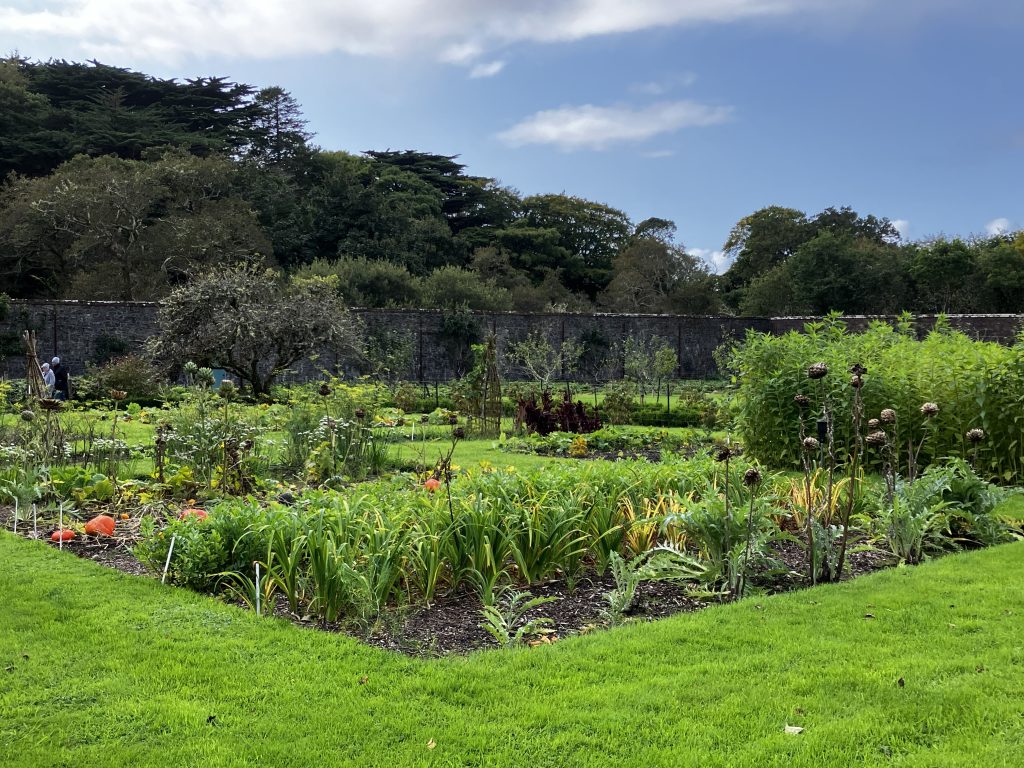
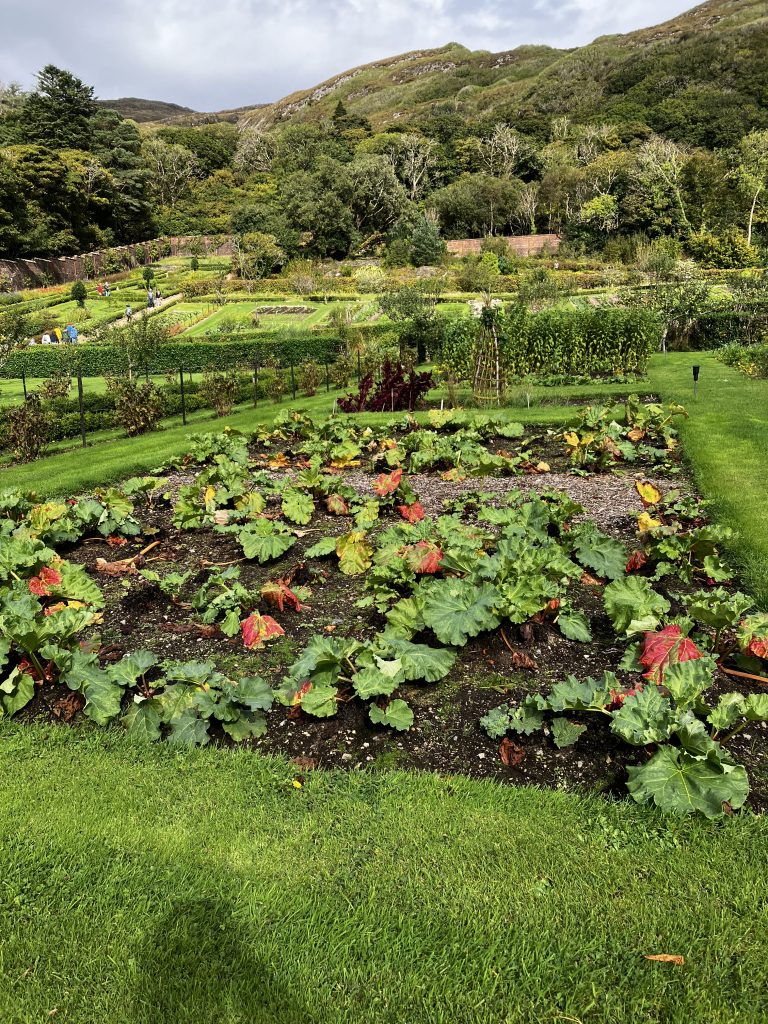
Nuns evidently eat a lot of rhubarb, just saying.
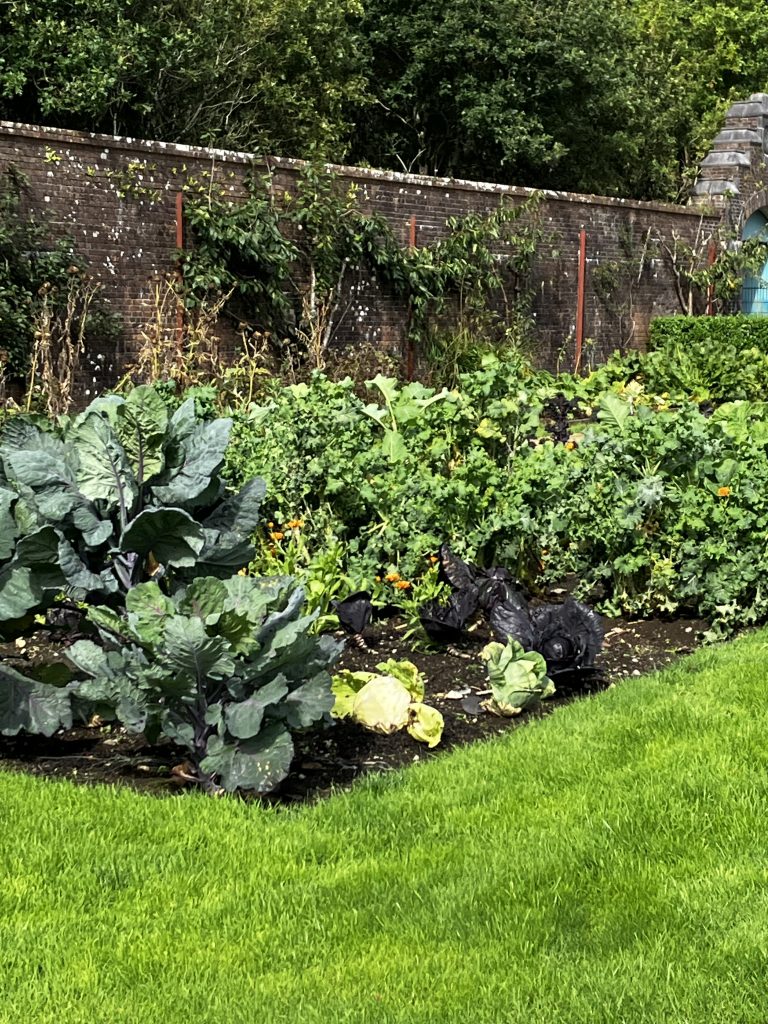
Even the walls were used, with espaliered fruit trees to catch every bit of the warmth from the sun on the bricks.
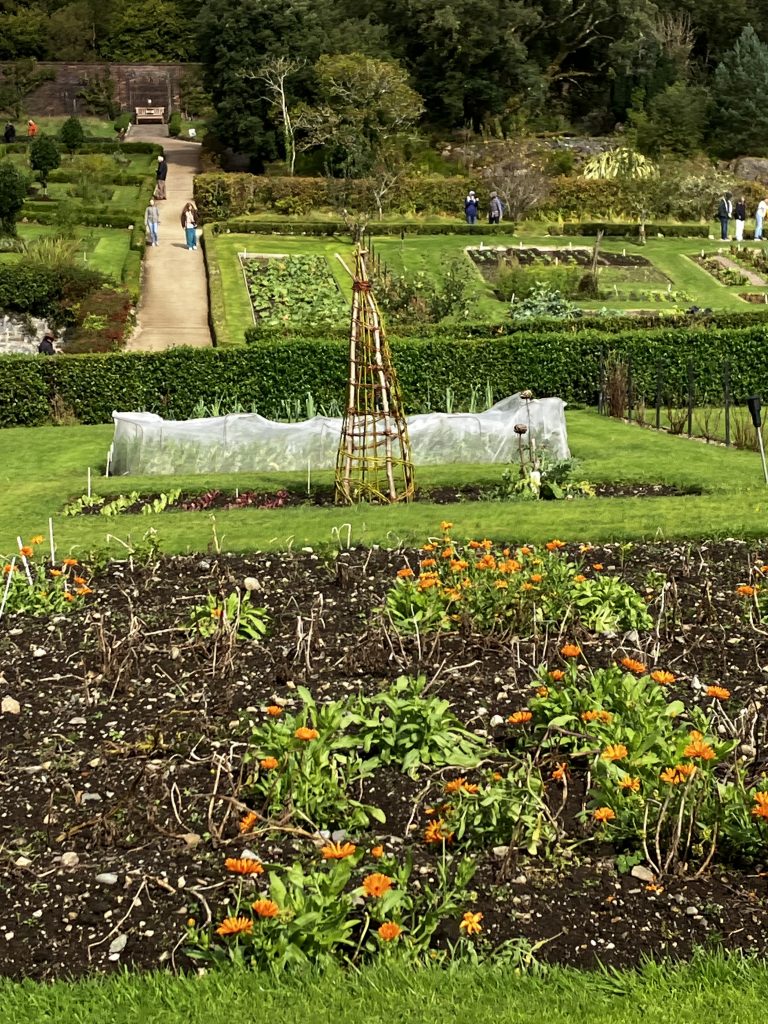
Could you grow enough to feed a family in a garden this size? I think so.
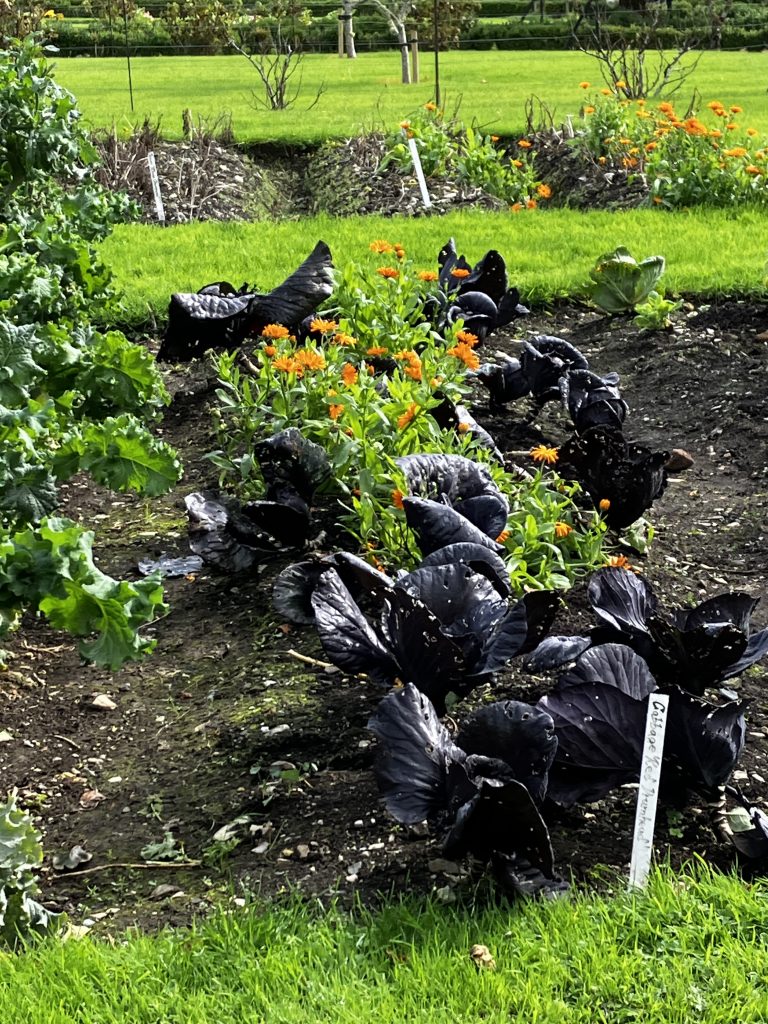
A fine lot of cabbages with marigolds interplanted within them. I started doing interplanting with flowers last year.
Looks like I’m onto a good thing.
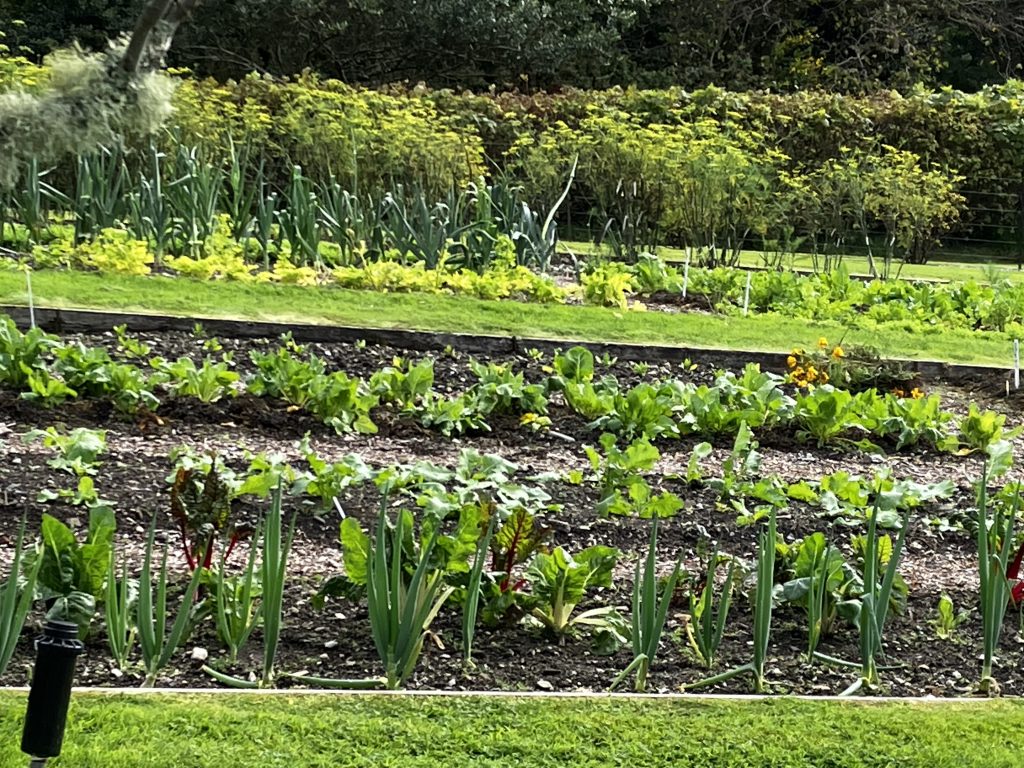
Another nicely ordered bed. Butwhat is that furry looki Branch poking in at the top left side?
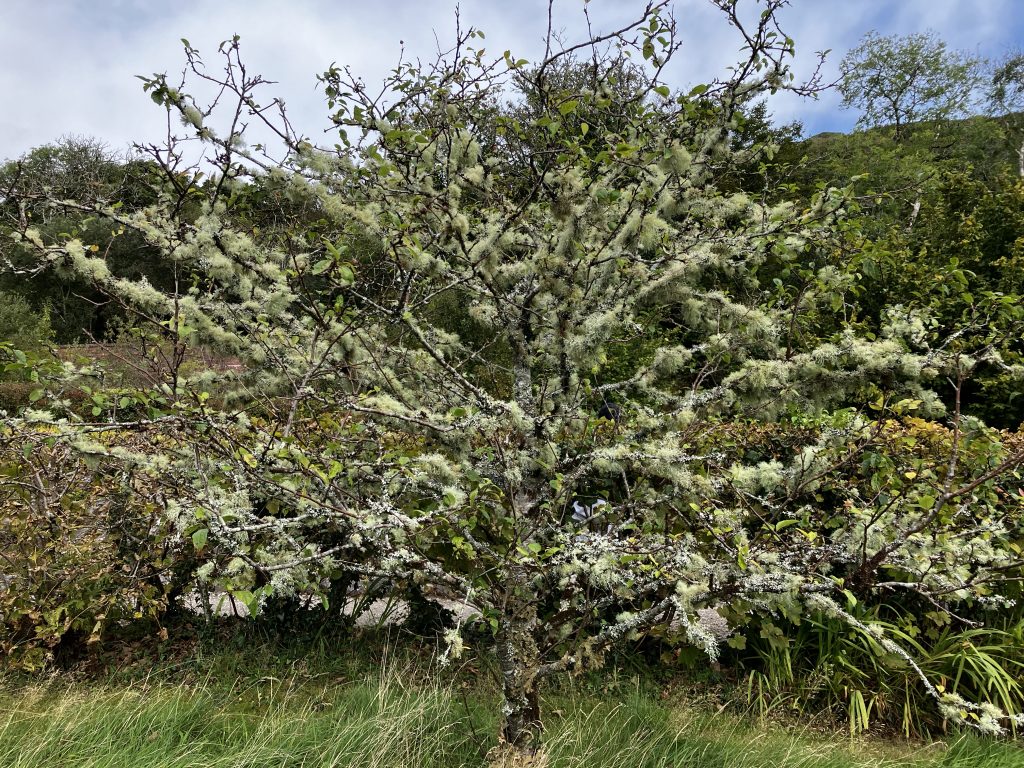
It’s an apple tree. I’ve seen one that’s covered with fur like this.
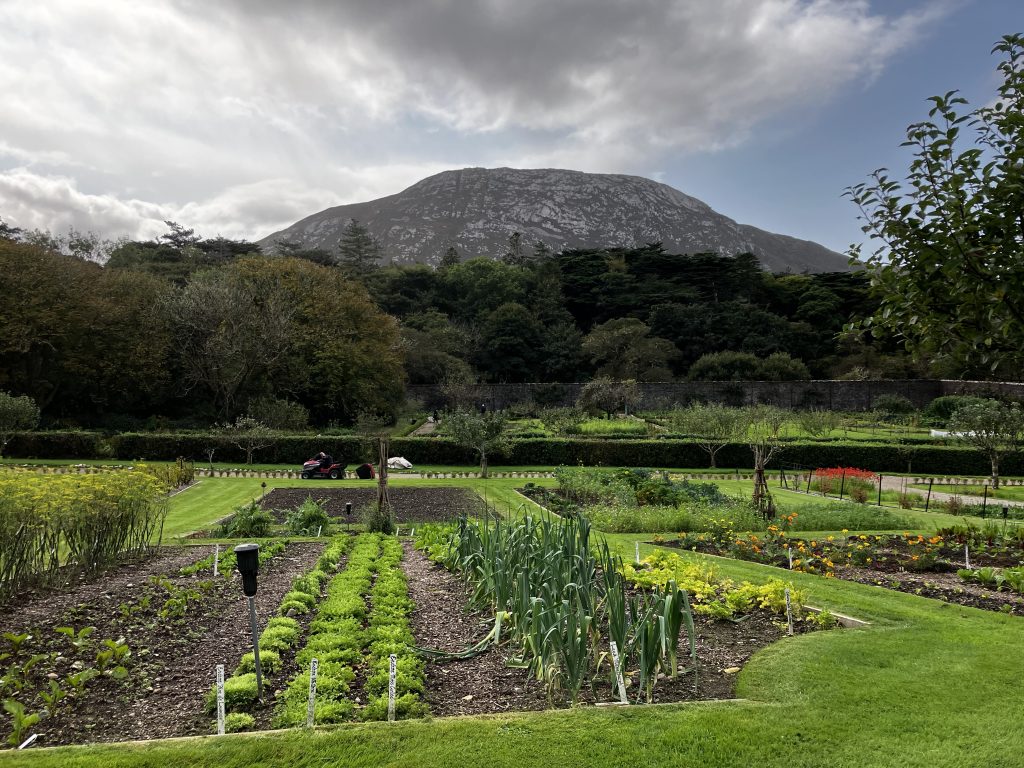
Can you imagine the nuns working in their garden, seeing the mountains surrounding them and feeling safe and enclosed?
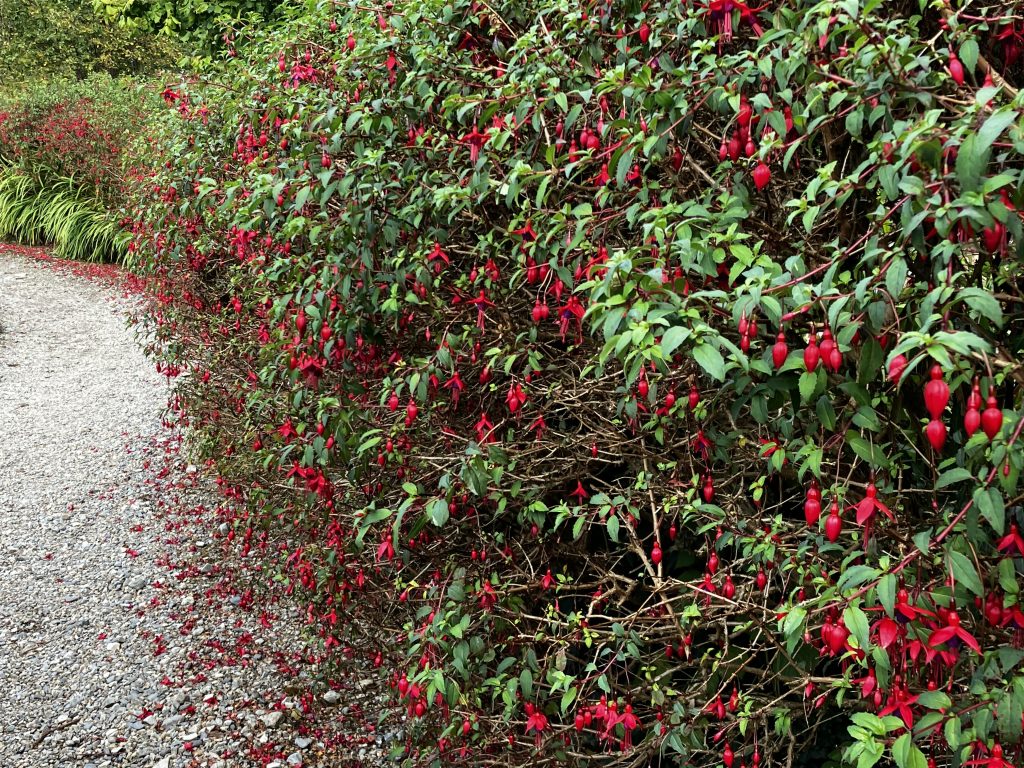
The sound of swiftly running water made me peer through the fuchsia hedge. There was a stream.
There’s something about the sound of running water, isn’t there?
I saw my second robin red breast in the kitchen garden. It was happily flying in and out of the fuchsia hedge. I talked with an Irish couple who laughed when I said that I was excited to see the robin.
“They’re all over the place in Ireland,” he said.
It seems that I should keep a sharper look out.
I’m going to buy a red and purple fuchsia when I’m home. It’ll remind me of the fuch Hedge where I saw my robin.
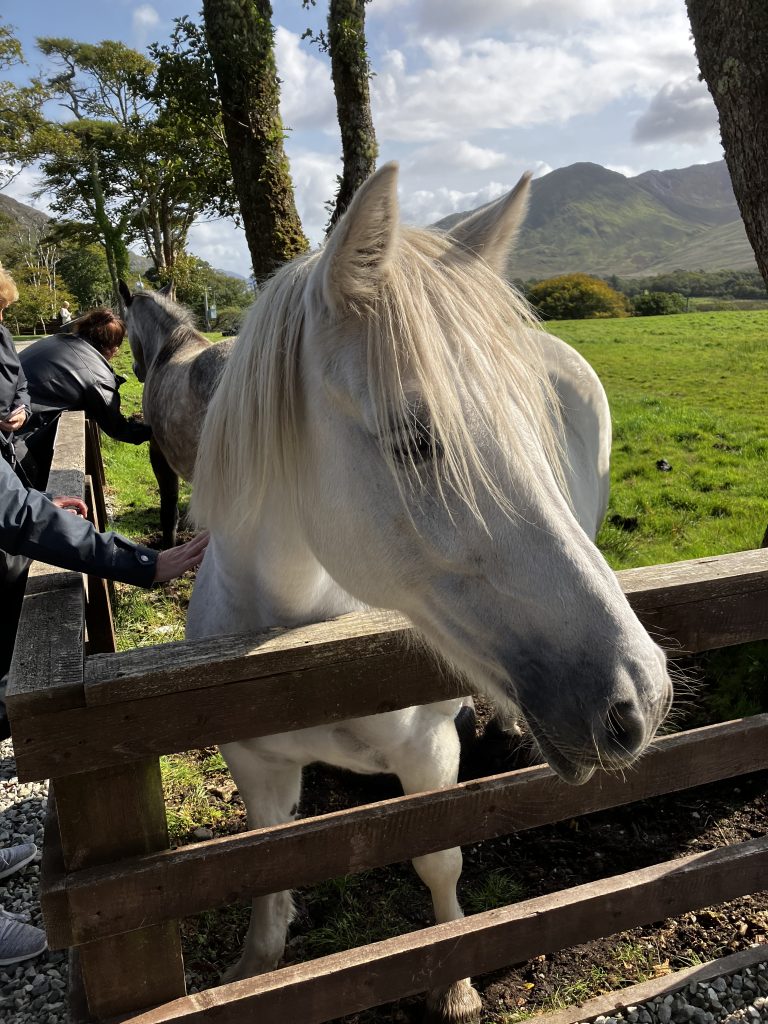
This garden has everything – even Connemara ponies.
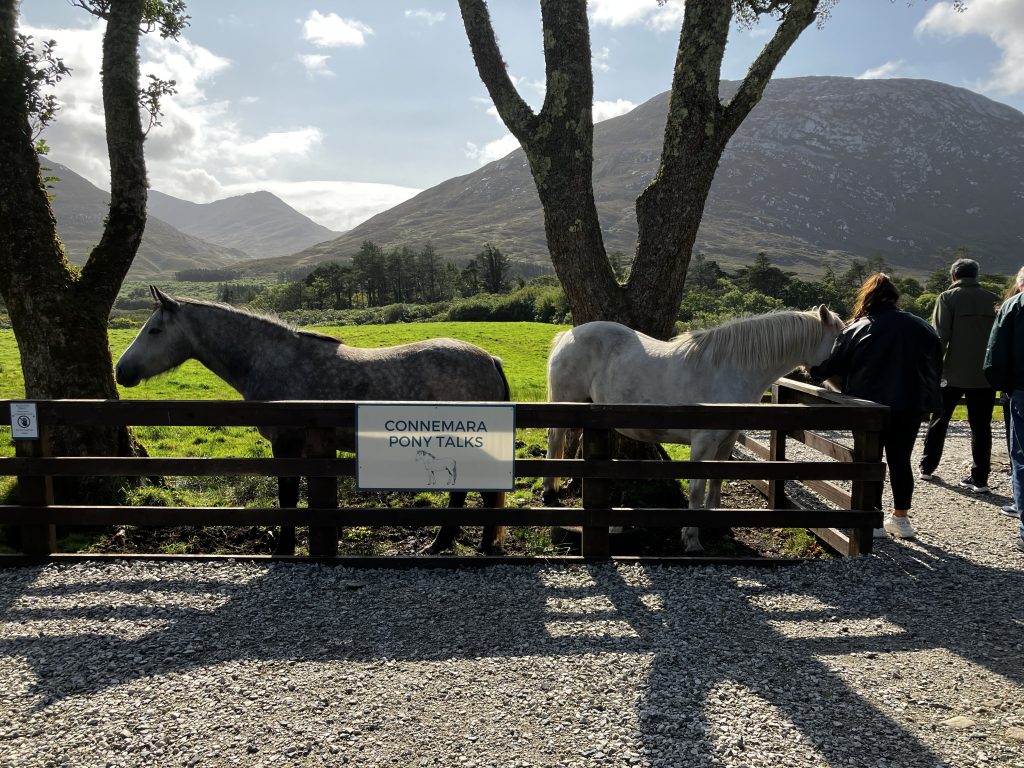
You can see the difference in the colour between the mother and her baby.
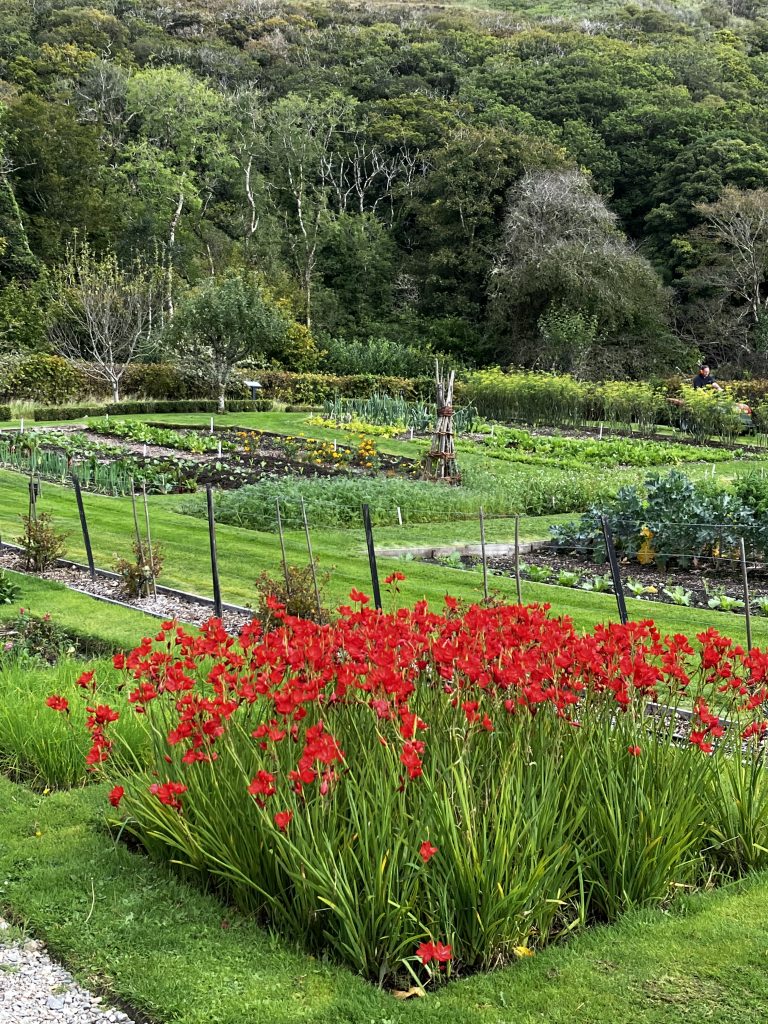
As I sat in the sun, waiting for the shuttle bus, I began to think of what life must have been like for the people who built this place.
The 27 hot houses where the ladies could take their walks when it was cold and wet. They’d likely take a pony trap or something to get them up here. It’s quite a hike for ladies with long skirts to do.
When they were in the hot houses they could eat a home-grown banana, which would be my idea of hell, but for them would be an unbelievable luxury.
There are only 2 hothouses here now and they’re tiny. But in his day, they were huge and were heated by pipes of hot water, which was also used to heat the house.
There were no trees here before he started the garden.
The hills around us are bare of all but grass, heather and sheep, but around the house and gardens are hundreds of trees. He certainly had the long game in mind when he planted this garden. One hundred and fifty years later, we’re getting the benefit.m
We slowed down beside the only fjord in Ireland, Killarney Fjord. During the Second World War, pilots would use the fjord as a line to guide them through to Europe.
Once during the war: there was a huge storm in the Atlantic and a British submarine took refuge in the fjord. They got a ping that a German submarine was right beside them. Neutral waters so they didn’t fire on each other, and when the storm abated, they went their separate ways.
Ferry used to travel faster and the dolphins used to play with them. Now that petrol is so high, the ferries have slowed down and it’s no fun for the dolphins anymore.
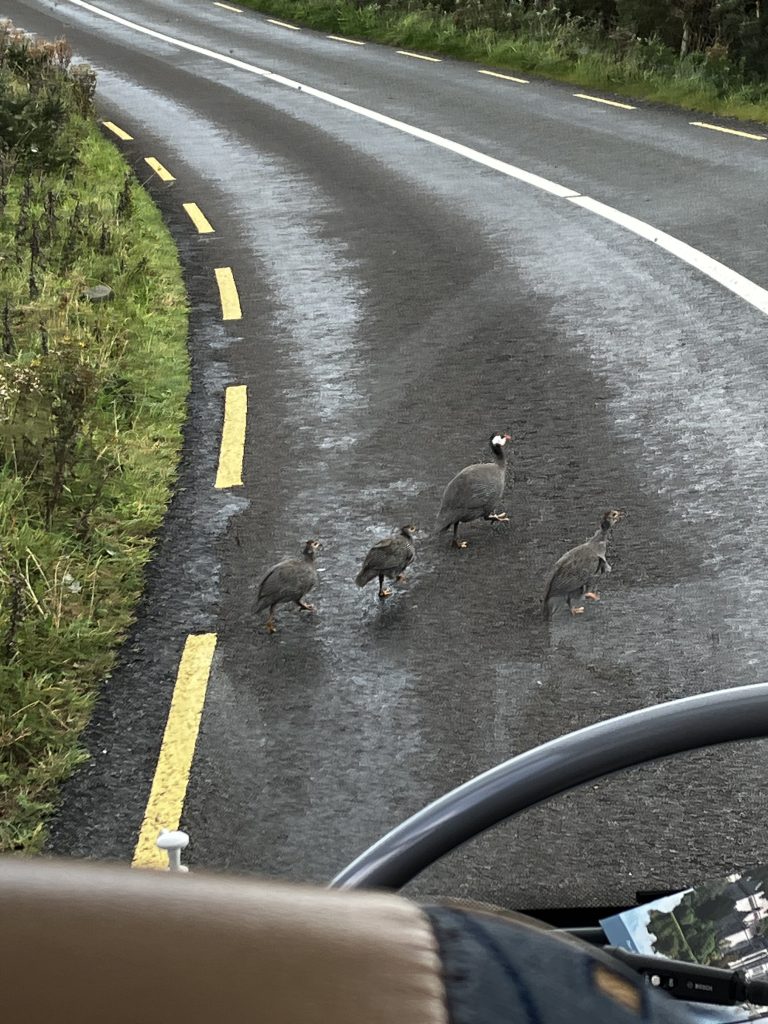
Peahen and chicks, just wandering around the road in front of us.
Lines in the land means potatoes. The people who lived on these hills were a driven-down race of people who were driven from their ancestral lands and ended up here. It was poor land, so the displaced people were left alone.
They used to drag seaweed up to the top of the mountains to fertilise the potatoes. Over time they became experts on growing potatoes and that’s all they grew. When the Famine hit, they were decimated.
In the famine, 2 million people died and 2 million left. Those who could afford to, left. Those who couldn’t were left to take their chances. The population of Ireland hasn’t yet recovered since the famine. They’re still a million people short, even now.
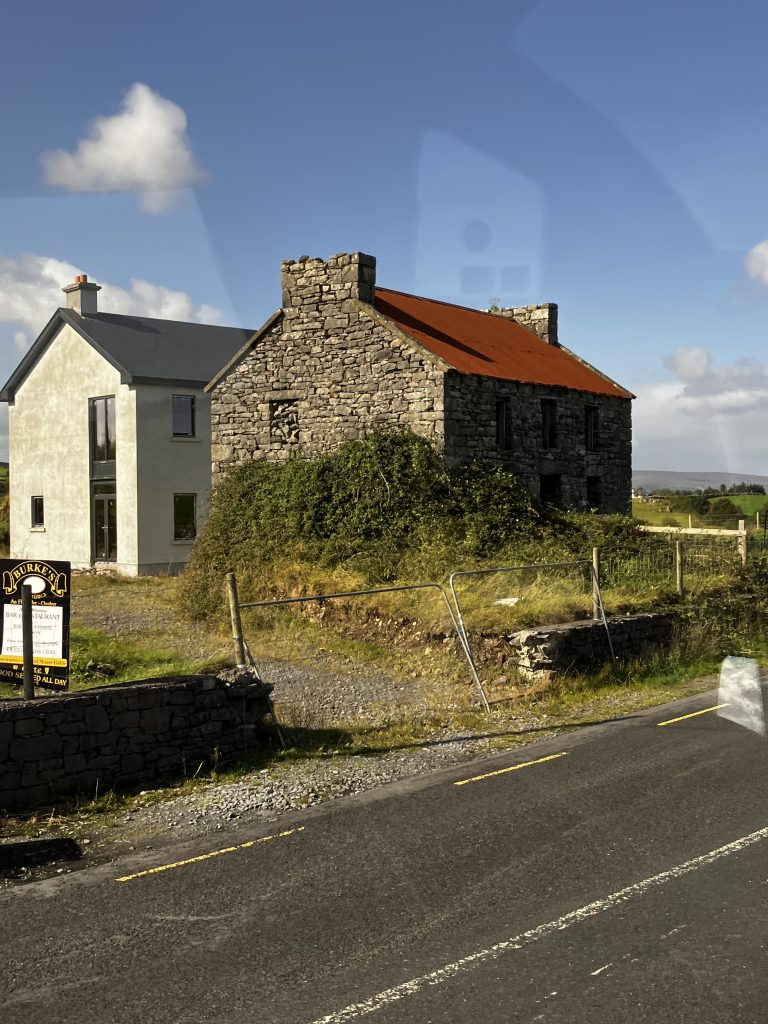
The queen sent an envoy who wrote that the Irish were simply being lazy. Ben pointed to the lines in the mountains and said, “People who wouldn’t farm like this, do you think they would be lazy?”
Queen Victoria sent a shipload of corn. The trouble was, that corn was totally unfamiliar to the Irish. She helpfully included recipes, but they were written in English when everyone only spoke Irish. Plus they were illiterate, because they were forbidden to go to school.
The Choctaw Indians sent $450. They’d been through their own troubles with white settlement. Then during Covid, the Choctaws set up a Go Fund Me Fund an A million and a half euros sent back to return the favour. I guess the Irish never forget.
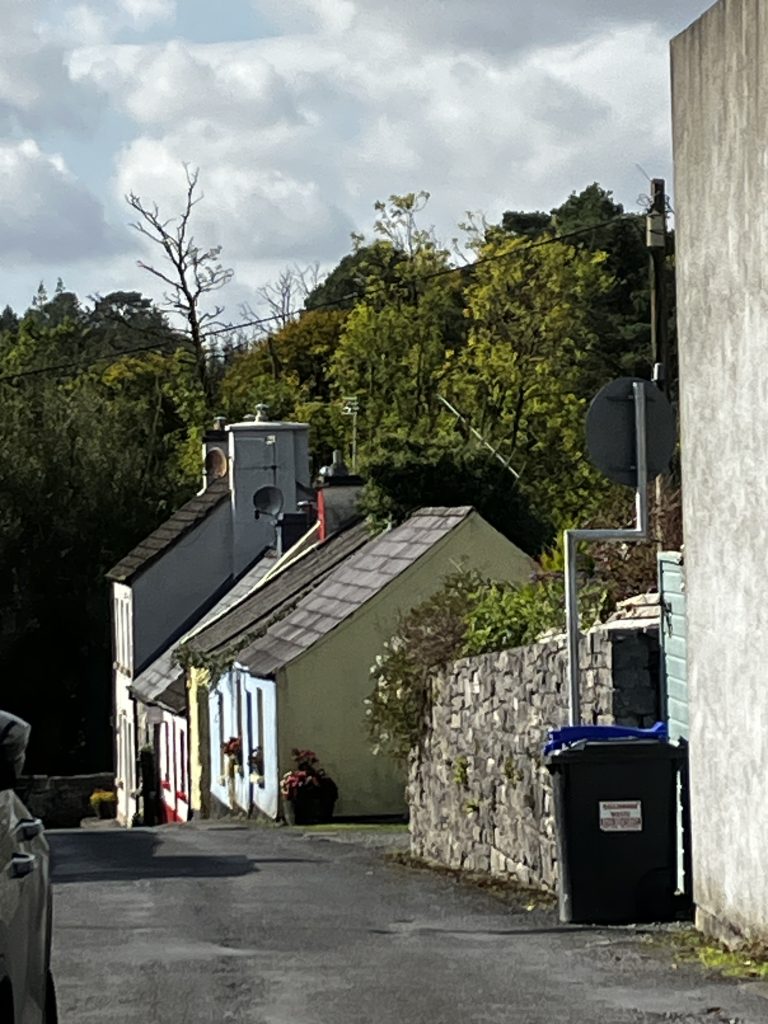
Village of Cong, where The Quiet Man was filmed.
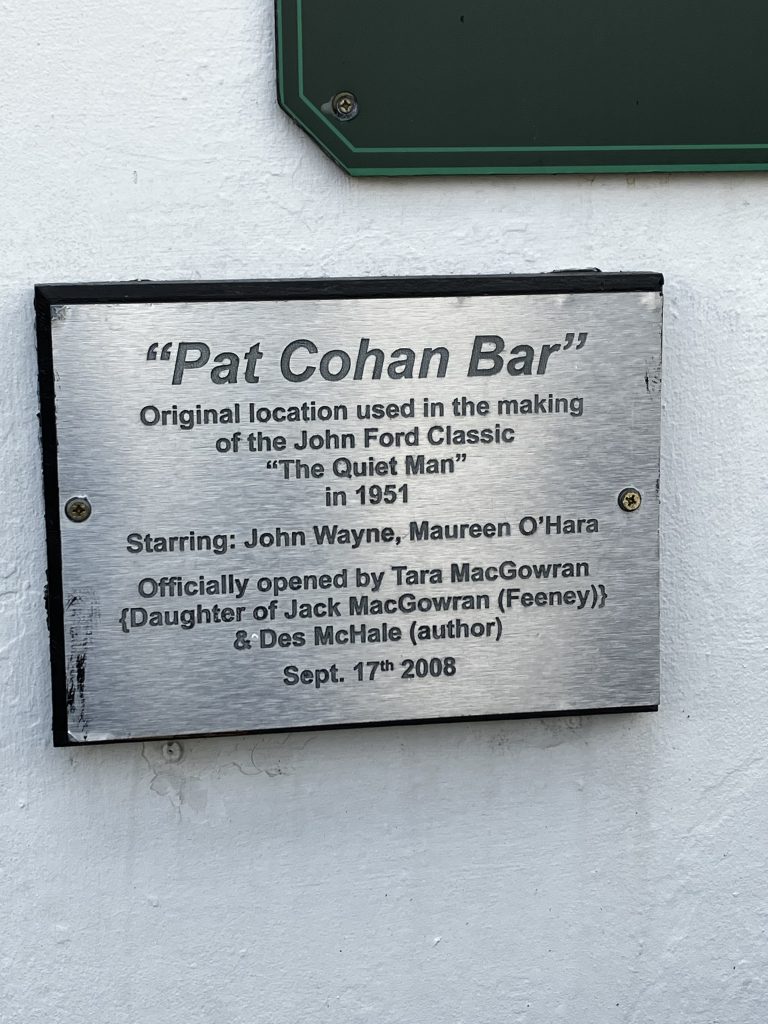
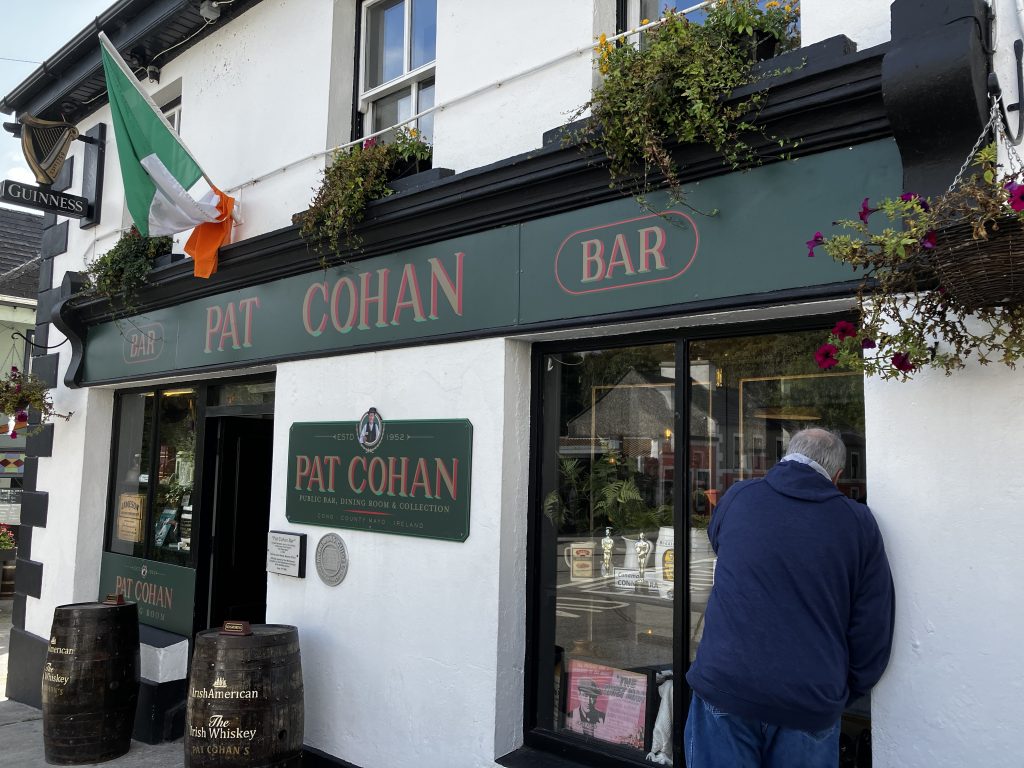
This place was doing a roaring trade with people just wanting to sit at the bar and drink a pint of Guinness.
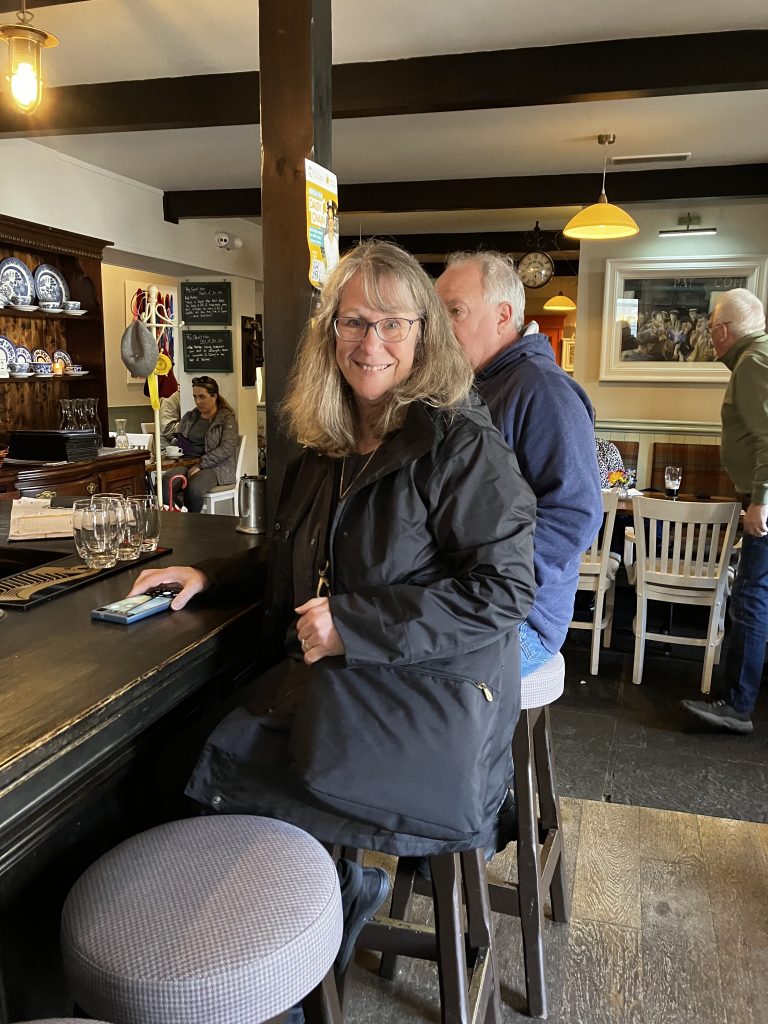
Gayle was so happy. ‘The Quiet Man’ is her favourite movie so she was pretty much in heaven.
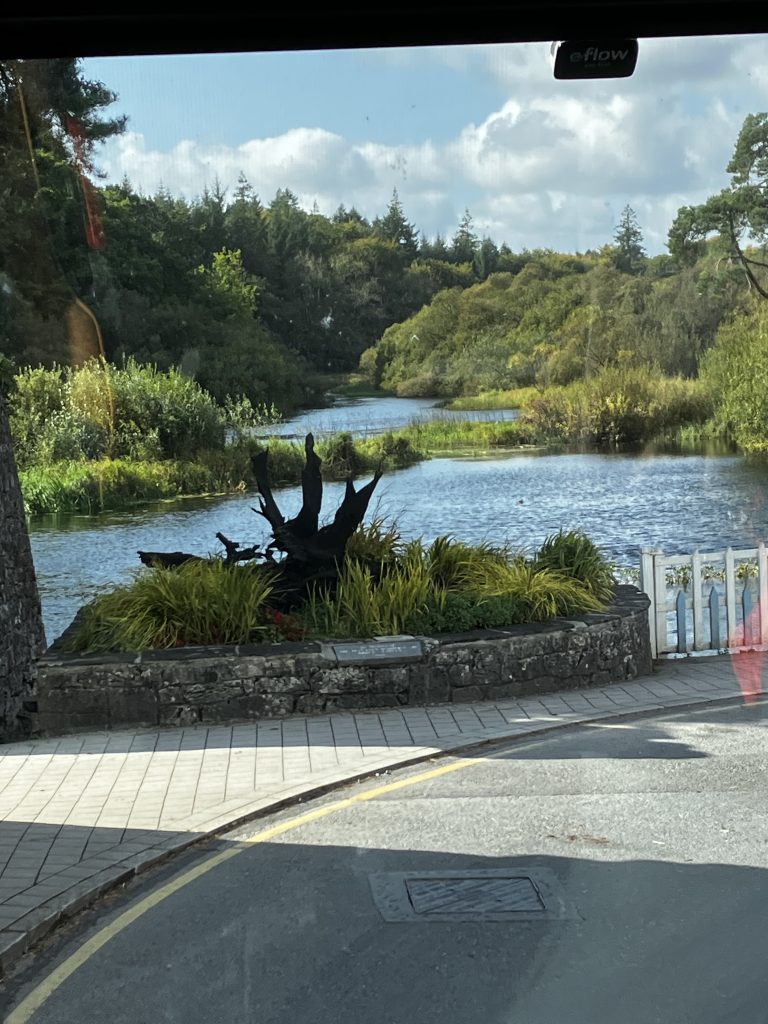
Cong is certainly living off the back of this movie! It’s a pretty little place though.
Turn your head to the side…
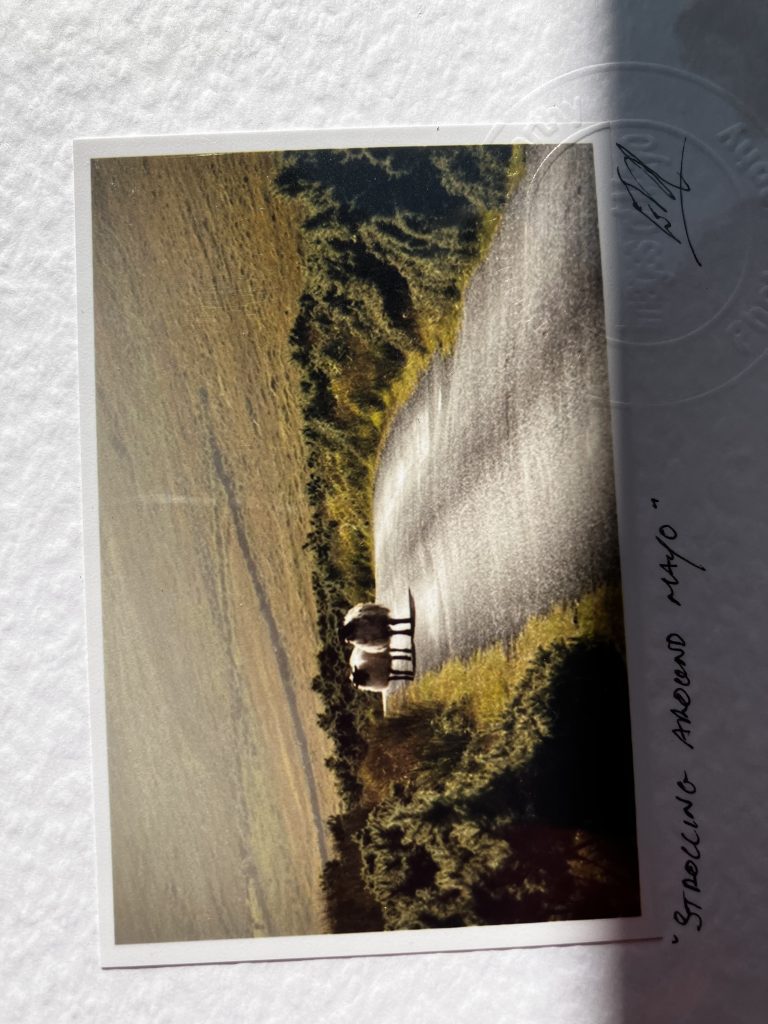
I bought this little card. It reminds me of the photo at the top of this post.
Wow, Kylemore Abbey is a stunning property! Between the rhubarb and the apples, those nuns probably got to enjoy quite a few apple and rhubarb pies for their dessert, I’d imagine. ????
That’s a sure bet. They’re excellent cooks, so those pies and crumbles would go down a treat.
As I read your travelogue, a future trip to Ireland is taking shape in m mind. You have captured the beauty and history of this place so well!
Thank you so much for saying this. Sometimes it feels like I’m spending so much time doing this for nothing, so this means the world to me.
I very much enjoy your posts about your trips (great photos, interesting tidbits of information)–please don’t think you are doing this for nothing!